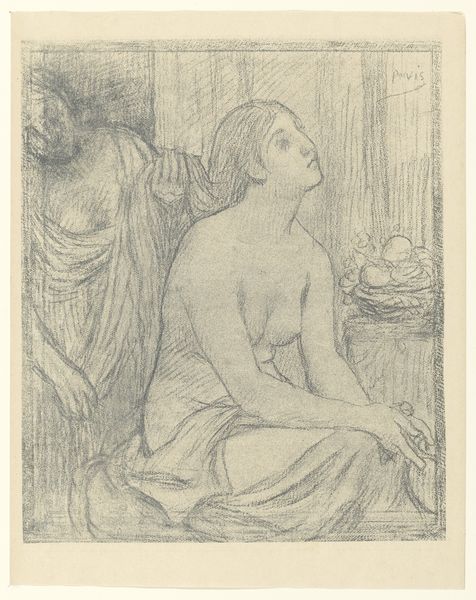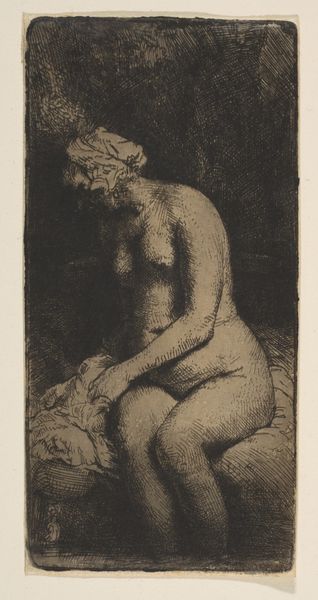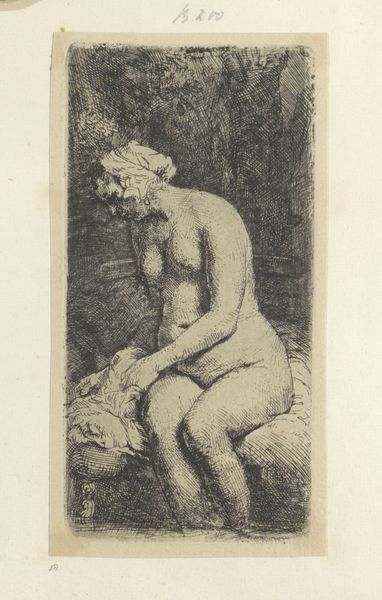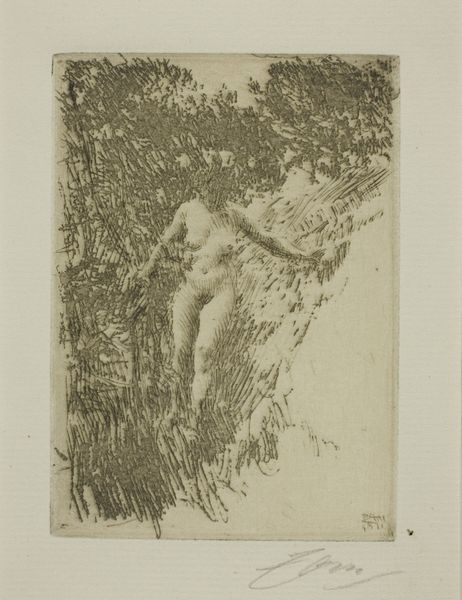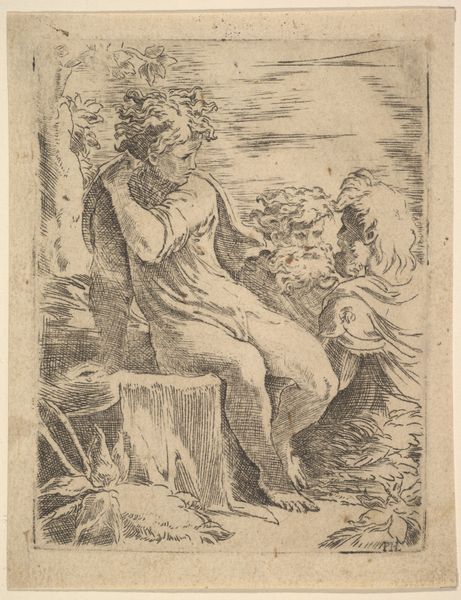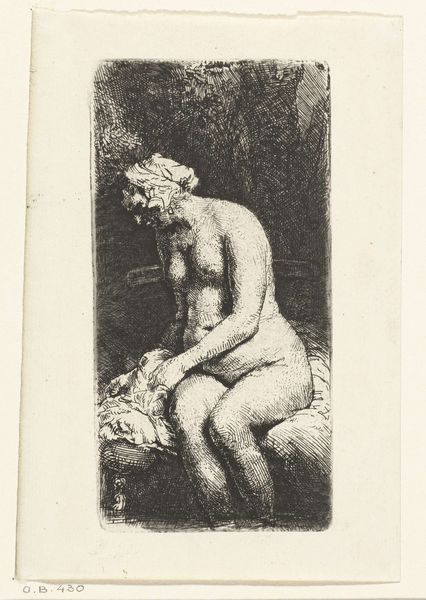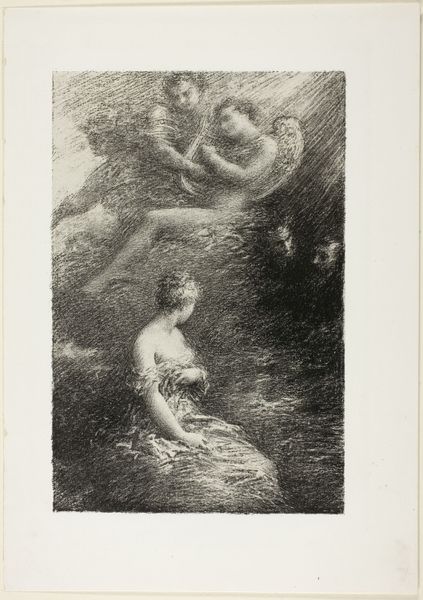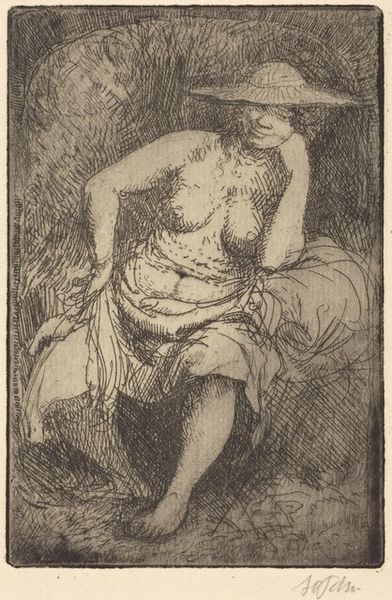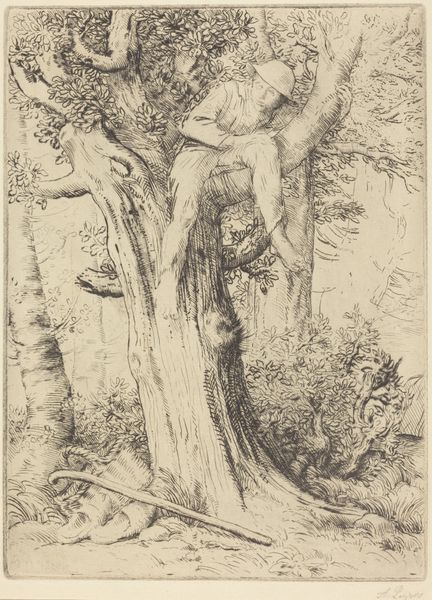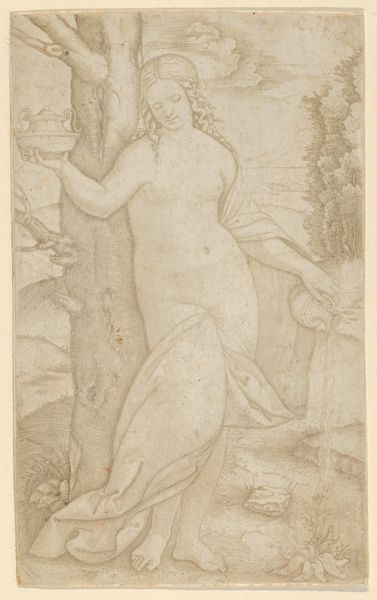
drawing, print, paper, engraving
#
portrait
#
pencil drawn
#
drawing
# print
#
figuration
#
paper
#
11_renaissance
#
history-painting
#
italian-renaissance
#
nude
#
engraving
Dimensions: 175 × 116 mm (plate)
Copyright: Public Domain
Editor: This is Jacopo de’ Barbari’s “Cleopatra,” a print made between 1509 and 1515, currently at the Art Institute of Chicago. It’s a delicate engraving on paper. The Cleopatra depicted here, she seems so pensive, even melancholic. I’m curious, what do you see in this piece, considering it's a depiction of such an iconic figure? Curator: The engraving, with its subtle lines, certainly invites contemplation. Note how Cleopatra isn't presented with the usual symbols of royalty or power we might expect, instead she’s nude, vulnerable. And the asp, traditionally a symbol of her demise, rests passively on the crumbling architecture nearby. Editor: So, the asp isn’t actively threatening? Curator: Precisely! Consider how Renaissance artists were grappling with classical imagery. They used symbols to explore moral narratives, the contrast between earthly beauty and decay and mortality. The snake could be interpreted here less as an instrument of death and more as a memento mori, a symbol of life’s transience. What does the surrounding landscape evoke for you? Editor: I hadn’t really considered the crumbling structures as symbolic… It makes her seem very isolated in this barren place. Curator: Yes! And it could symbolize how civilizations rise and fall, even great figures like Cleopatra are eventually subject to time. Perhaps, this image is less about celebrating Cleopatra’s reign and more about contemplating the inevitable passing of glory and the enduring power of human vulnerability in the face of time. Editor: I never thought of it that way before! Thanks for highlighting how symbols from different contexts speak to one another across time! Curator: It's in that conversation between then and now, the image truly takes its form.
Comments
No comments
Be the first to comment and join the conversation on the ultimate creative platform.
